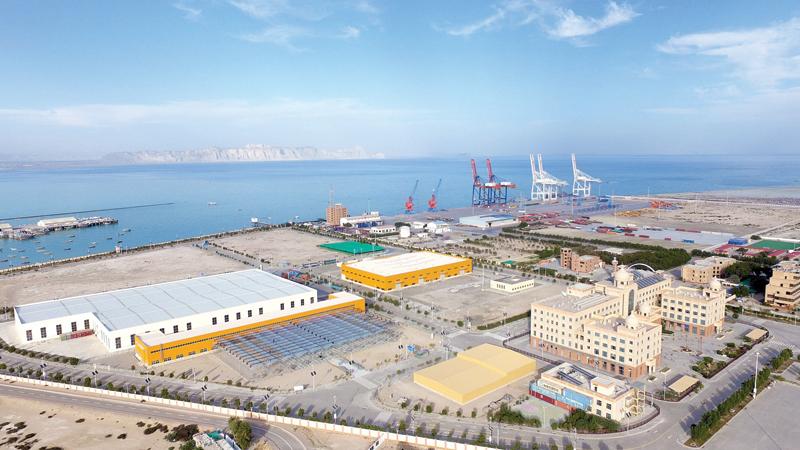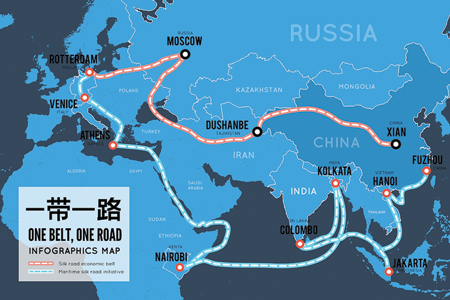
The pandemonium marked by high inflation, civil disorder and the Rajapaksa ruling family’s fall from grace in Sri Lanka last year seemed to be a nemesis for China for its presence in the island nation as Chinese involvement often viewed as a wanton effort in predatory imperialism which was partially responsible for financial impoverishment of a sovereign nation.
It was against this backdrop that some of the Western pundits forecast that China would lose its grip over Sri Lanka, followed by the political-economical hullaballoo that encompassed Sri Lanka in 2022. Yet the truth that is now hiding in plain sight is the general loss of China’s ostensible influence in Sri Lanka will not cede its growing influence in the Indian Ocean Region (IOR) regardless of India’s orbit.
It should be borne in mind that modern Chinese strategists’ take on their zest for maritime power reflects the views espoused by the eminent US military strategist of the 19th century Alfred Thayer Mahan, whose contention on naval strategy indicating the complete supremacy of the seas as a means for great powers was a celebrated idea in an epoch even before America clung to its global leadership.
In his seminal work on the future of American power in the Indian Ocean, Kaplan refers to Mahan as the key strategic inspiration for the Chinese naval strategy and whether it is true or false, it is worth noting that China’s naval engagement in the IOR or Sri Lanka has its historical roots which date back to the time before the European advent in South Asia in the 16th century.
Song and Ming dynasties
Chinese sea power flourished under the Song and Ming dynasties, from the late 10th to the early 15th century, which culminated in the celebrated voyages of the eunuch admiral Zheng He and their naval approach was decisively different from the European invaders who sought to establish a permanent military presence in the countries they explored in the 16th century. On the contrary, imperial China promoted the notion of tianxia (“Everything Under Heaven) and appealed to the nations for building alliances or tributary systems. But this was not a process always opted for a pacific path as Ming China’s war with the Kotte Kingdom in Sri Lanka in the late 15th century was a subtle display of Chinese military intervention in needed circumstances.
 The benign efforts that China tends to manifest in its naval strategy today resemble China’s own historical naval voyages under the Ming dynasty and it is not mere hyperbolic rhetoric to ignore Chinese influence in Sri Lanka after the expulsion of the Gotabaya Rajapaksa regime from power as a dwindling factor.
The benign efforts that China tends to manifest in its naval strategy today resemble China’s own historical naval voyages under the Ming dynasty and it is not mere hyperbolic rhetoric to ignore Chinese influence in Sri Lanka after the expulsion of the Gotabaya Rajapaksa regime from power as a dwindling factor.
The strategic importance of Sri Lanka for China’s maritime dominance may be stemming from the island’s intrinsic position as an unsinkable aircraft carrier. Naval power will be as accurate as an indicator of an increasingly complex global power arrangement as anything else. Given China’s obsession with acquiring naval supremacy in the backyard of India, Sri Lanka’s future lies in balancing the various global actors.
The island chain strategy formulated by the US statesman John Foster Dulles in 1951 received its momentum in the hands of Chinese strategists as its defensive method and it has extended to the IOR by adding Sri Lanka’s Hambantota and Gwadar in Pakistan as the fourth island chain.
Transmarine expansion
In the global annals, powerful States have always engaged in transmarine expansion to gain the fullest control of adjacent seas, but China’s doctrine of island chains would not embody an explicit interest of gaining complete command in the seas as the British Empire did in the 19th century. Taking a shift from Mahan’s mantra of gaining maritime supremacy to the core, Chinese strategy now conspicuously focuses on balancing power at sea without the hegemony of one State, but that tilts in favour of China.
According to IR scholar Andrew Letham, this shift embodies China’s maritime strategic turn from Mahan to Corbett, the late British naval historian whose works insisted that all maritime strategies should derive from political goals.
The political instability of Sri Lanka, which resulted in ousting a President from power and the negative portrayal of China as the principal culprit for its debt trap on Sri Lanka would not reduce the solid foundation built up by the West in the island nation to get outflanked by Indian or Western influence.
The dilemma faced by the Sri Lankan Government in the aftermath of Gotabaya Rajapaksa’s fall last year regarding permitting the Chinese surveillance ship Ywan Wang 5 shows the stark reality of Chinese influence on the island regardless of India’s security concerns.
Geopolitical advantage
Beyond this looming political-economic chaos in Sri Lanka, the astute geopolitical advantage awaits that Beijing would assiduously embrace as it would solidify China’s maritime Belt and Road Initiative (BRI), which symbolises the Chinese version of Globalisation in the 21st century. The shape of Sri Lanka as an unsinkable aircraft carrier in the IOR is akin to how Taiwan becomes strategically important to both China and the US in the Pacific Ocean.
Given this timely geopolitical advantage in favour of Chinese interests, it is unlikely to see any possible ebb of Chinese influence upon Sri Lankan polity in future. In particular, the array of development projects carried out by China around the island and the massive support that has been extended to the Sri Lankan Government in the past either in the UN Human Rights Council (UNHRC) or elsewhere remains China’s forte in Sri Lanka, wherein India and the West have shown a sense of ambivalence.
The current Chinese reading on Sri Lanka amidst its turmoil reflects the same old doctrine initiated by the Ming General Zheng He in the 15th century toward the Kingdom of Kotte in Sri Lanka. Zheng He’s indomitable military spirit ran parallel to his ambition for commercial objectives and the trilingual inscription erected in Galle in 1410 invoked the blessings of deities for a peaceful world built on trade. All in all, the Ming dynasty in the 15th century and modern Beijing’s vision towards Sri Lanka take the same root, which expects Sri Lanka’s cooperation as a tributary state for the great naval strategies of China to blossom.
The writer is a researcher and analyst at the Institute of Law, Politics and Development, Scuola Superiore Sant Anna, Pisa, Italy.
